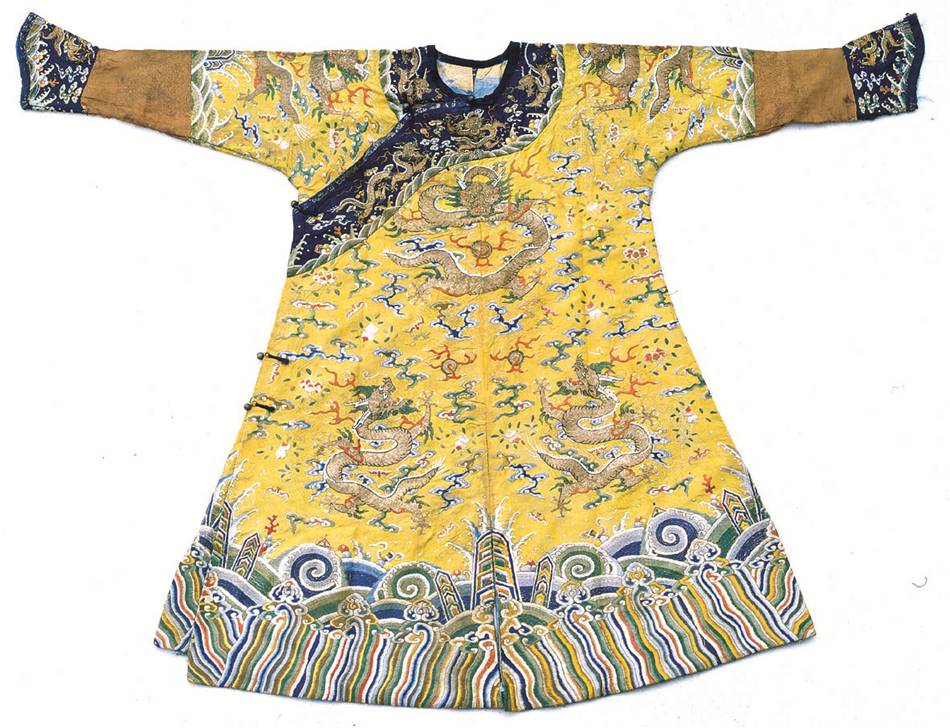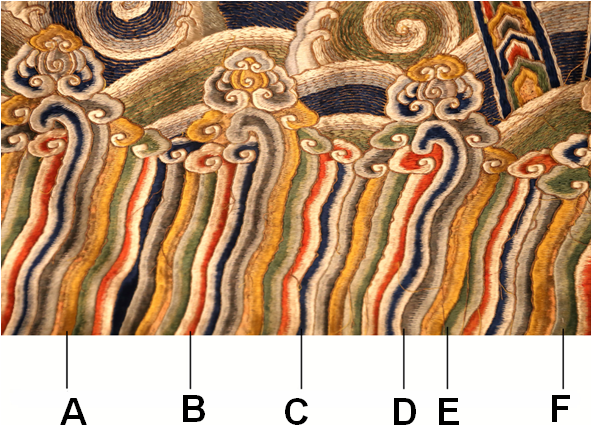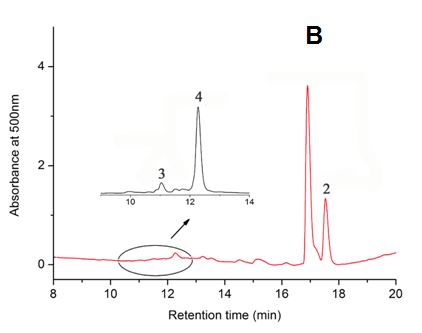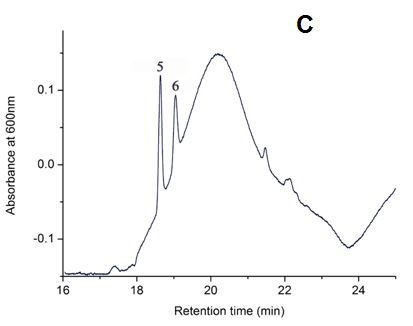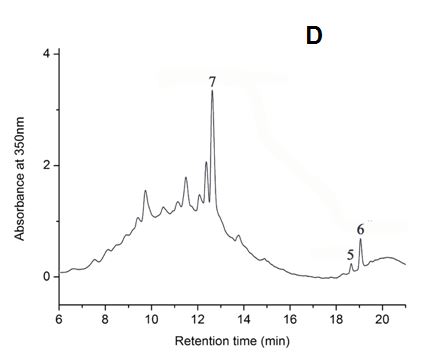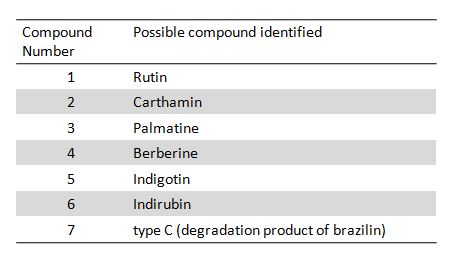CNSM 1858, Small Dragon Robe, China (Qing Dynasty, 1644-1911 CE)
Artifact Information
Small Dragon Robe, China (Qing Dynasty, 1644-1911 CE). Height: 94 cm Width: 136 cm
Exisiting dragon robes are far from rare. This one however, really is, due to its small size. The dragon motifs are exquisitely worked on a yellow silk ground with gold couching technique while polychrome silk threads are used for clouds, bats and flowers. The most plausible explanation for a dragon robe of this size is that it is tailored specially to fit a child emperor. (depicted by Yan Xue, translated by Huiwei Shen).
China National Silk Museum, Hangzhou, China. #1858.
Analytical instrumentation and procedures
The dye was extracted from a thread (0.2-1mg) of the archaeological object in a solution of pyridine/water/1.0M oxalic acid as described by Mouri and Laursen [1]. The solution was evaporated to dryness under a nitrogen flow, and redissolved in 50 μL MeOH/H2O (1/1); subsequently, 20 μL of dye solution was injected onto HPLC column.
An extract was analyzed on an HPLC-PDA-MS system consisting of a Shimadzu LC-20A high performance liquid chromatography, a Shimadzu SPD-M20A photodiode array detector and a Thermo LTQ XL ion trap mass spectrometer. The separation was performed on a Shim-pack XR-ODS column (3.0 mm × 75 mm, 2.2-μm particle size) and a Phenomenex Luna C18 column (2.0 mm × 150 mm, 3-μm particle size). Columns were eluted with acetonitrile-water gradients containing 0.1% formic acid at a flow rate of 0.3 mL/min.
Summary of results
HPLC-MS analysis shows several common dyes were used to dye the Qing dynasty object. Bright yellow threads (part A) were dyed with pagoda tree buds due to the fact that a big peak corresponding to rutin is seen in HPLC profile of the yellow dye. Safflower was identified in red threads (part B)[1], along with Phellodendron spp, which is in good agreement with a dyeing recipe recorded in Tian Gong Kai Wu (Explotation of the Works of Nature, written by Song Yingxin in 1637). Indigo can be used not only to produce a blue color (part C), but also to produce various green colors by overdyeing with pagoda tree buds (part E) or Phellodendron spp.,(part F) Purple threads (part D) were dyed with a mixture of sappanwood and indigo.
HPLC profile
References
[1] [1] Xu X. Studies of samite with birds from Tibetan Tombs in Dulan of Qinghai. China Tibetology 1996; 1: 3-26.
[2] Richard A. Laursen and Chika Mouri "Decomposition and analysis of cathamin in safflower-dyed textiles", e-Preservation Science 2013, 10, 35-37.
